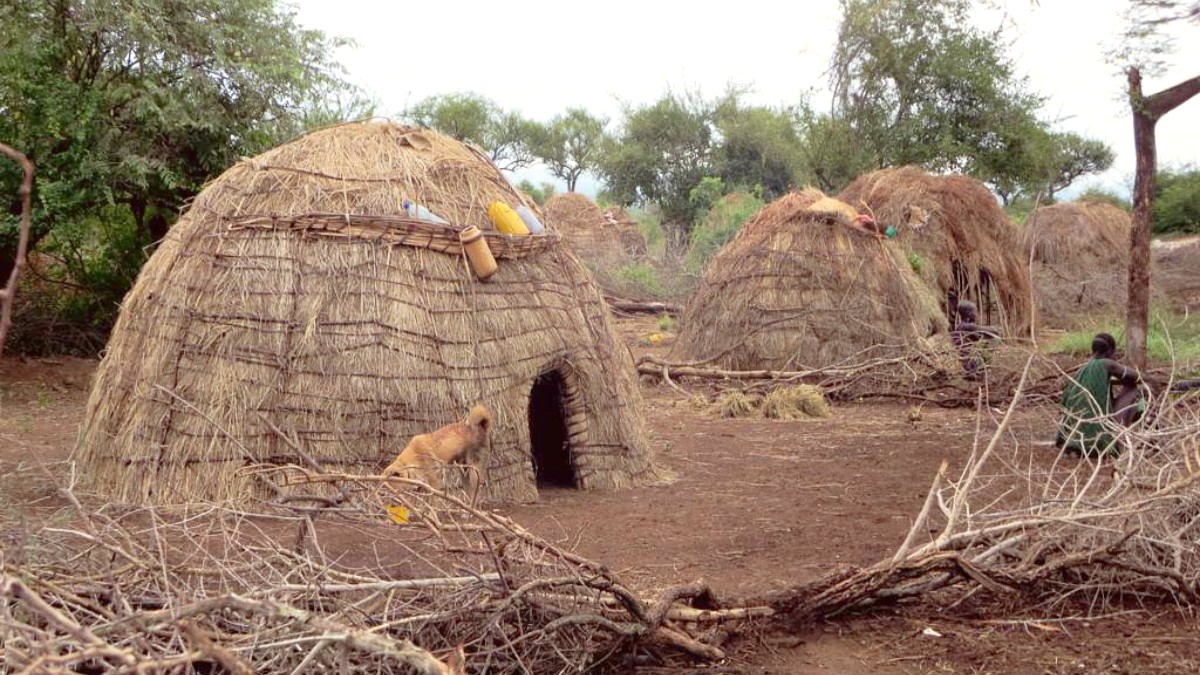
Ethiopia
The main attraction of the Omo Valley is its diverse tribal villages, each with distinct cultures, body adornments, and traditions. These visits offer unparalleled opportunities for cultural observation.
For organized tours and seamless booking for attractions, consider GetYourGuide, a platform for booking attraction tickets and guided tours globally. While Omo Valley specific tours on it may be limited, it can be a useful resource for broader Ethiopian tours.
These locations showcase the region's human diversity.
This small museum offers valuable insights into the diverse cultures and history of the Omo Valley tribes. It displays artifacts, traditional tools, and explanations of tribal customs.
A visit here prior to village tours can greatly enrich your understanding of the living cultures you will encounter.
There are no other famous specialized museums, art galleries, exhibition spaces, or formal cultural performance venues in the immediate Omo Valley region.
Local crafts and traditional art forms are sold directly by artisans in villages or at local markets.
The cultural experience is organic and found in the living traditions of the people, not in formal exhibits.
The Omo Valley's history is mostly living history, but some sites offer archaeological or architectural significance, alongside impressive natural landscapes.
Visited on the approach to the Omo Valley. Rich in archaeological and historical significance, known for terraced landscapes, fortified villages, and unique "waka" (carved wooden funerary steles).
Offer unique terraced architecture and a distinct pattern of settlement, reflecting a long history of communal living and defense.
Omo Valley tribes largely follow traditional animist beliefs. No specific formal religious sites for tourists. Tribal rituals hold deep spiritual meaning.
There are no specific memorial sites or monuments dedicated to historical events for tourist visits in the Omo Valley.
The Omo Valley has no significant industrial or military heritage sites for tourism.
The region's history is predominantly experienced through its ongoing cultural practices and traditions.
Mago National Park is home to various wildlife, and it hosts Mursi tribe settlements. Omo National Park is more remote with diverse ecosystems.
The Omo River offers scenic views. Arba Minch, a gateway town, boasts stunning features like the "Bridge of God" and is near Nechisar National Park.
Mago and Omo National Parks contain wildlife, though sightings can be challenging. Lake Chamo, near Arba Minch, is remarkable for large Nile crocodiles and hippos.
The Omo Valley's natural setting includes significant waterways and geological formations.
The Omo Valley itself is a hidden gem for many travelers due to its remote nature. Within it, certain experiences are less common and offer a perspective.
The diverse body adornments, scarification, and traditional clothing of the Omo Valley tribes offer unparalleled photographic opportunities. The natural light, the dusty landscapes, and the authentic expressions of the people create stunning images. Always ask permission and pay the agreed fee for photographs, upholding respectful and positive interactions.
While well-known tribes like the Mursi, Hamer, and Karo are attractions, exploring less-frequented tribes offers unique experiences.
Many smaller villages, away from the main roads, are less frequented by tourists. These often show a more authentic look at daily life.
Mago National Park and Omo National Park offer opportunities for game drives. Wildlife here includes zebras, giraffes, buffalo, elephants, and various antelope species.
Formal hiking routes are limited. Most "trekking" consists of short walks between villages or to scenic points, usually on uneven terrain.
The Omo Valley experience is rich in cultural encounters, which serve as its main attraction.
Seek out less-frequented tribes for a more intimate and less tourist-influenced experience. Your guide may assist in finding these.
Explore smaller local markets away from the main tourist circuits for cultural insights and authentic daily life observations.
The diverse body adornments and traditional clothing of the Omo Valley tribes offer unique photographic moments. Respectful interaction is .
A multi-day guided tour to visit various tribes like Mursi, Hamer, and Karo, including market visits and cultural observations.
Find tours on GetYourGuideAn excursion from Arba Minch to see large Nile crocodiles and hippos, a highly reliable wildlife viewing experience.
Book Lake Chamo tripsA game drive opportunity to spot wildlife like zebras, giraffes, and various antelope species, alongside Mursi settlements.
Explore Park SafarisExplore the terraced landscapes and fortified villages of this UNESCO World Heritage Site, often included in Omo Valley itineraries.
Learn about Konso CultureShort walks between tribal villages provide a connection to the local environment and daily life.
Find Village TreksWhile the Omo Valley offers rich cultural insights, it is a remote destination with specific considerations for visitors.
Respectful interaction with local communities will enhance your experience. Your guide is for this.
The Omo Valley journey is less about traditional tourist landmarks and more about a profound cultural immersion.
The living history of its people and their traditions form the essence of your visit.
A journey to the Omo Valley provides an unique and unforgettable cultural exploration, offering deep insights into traditional ways of life.
Engage directly with distinct tribal communities, observe unique customs, and learn about their traditional practices.
Capture stunning images of traditional body adornments, village life, and the region's raw natural beauty.
Explore national parks and waterways for game viewing and impressive natural landscapes.
High Season (Oct-Feb) offers optimal weather, but shoulder (Mar-Apr, Sep) and low (May-Aug) seasons have fewer tourists.
Choose between basic guesthouses for budget-friendly stays or more comfortable lodges, typically booked through tour operators.
Travel within the valley typically involves a 4x4 vehicle with a guide due to challenging road conditions.
Expect traditional Ethiopian cuisine with simpler options in the remote valley. Lodges are your main dining spots.
A local guide is almost always needed for village visits to facilitate communication and ensure respectful interactions.
Adhering to local customs respects the communities and enriches your visit.
Prioritize your well-being with these safety reminders for your Omo Valley journey.